Extraordinary precious stones from an important part of great international collections. Astrid Fialka-Herics, head of the Dorotheum Clocks and Jewellery Department, presents her favorite piece of jewellery from the world’s great museums. This time she writes about the bouquet of precious stones in Vienna’s Museum of Natural History, renowned as the foremost collection of miniature gemstones in Europe.
Moulded in the spirit of the Enlightenment, numerous dynasties responded to the new scientific discoveries with openness and interest as early as the seventeenth century. Art and curiosity cabinets – Kunst- and Wunderkammer – were set up and collections started, with the aim of further study.
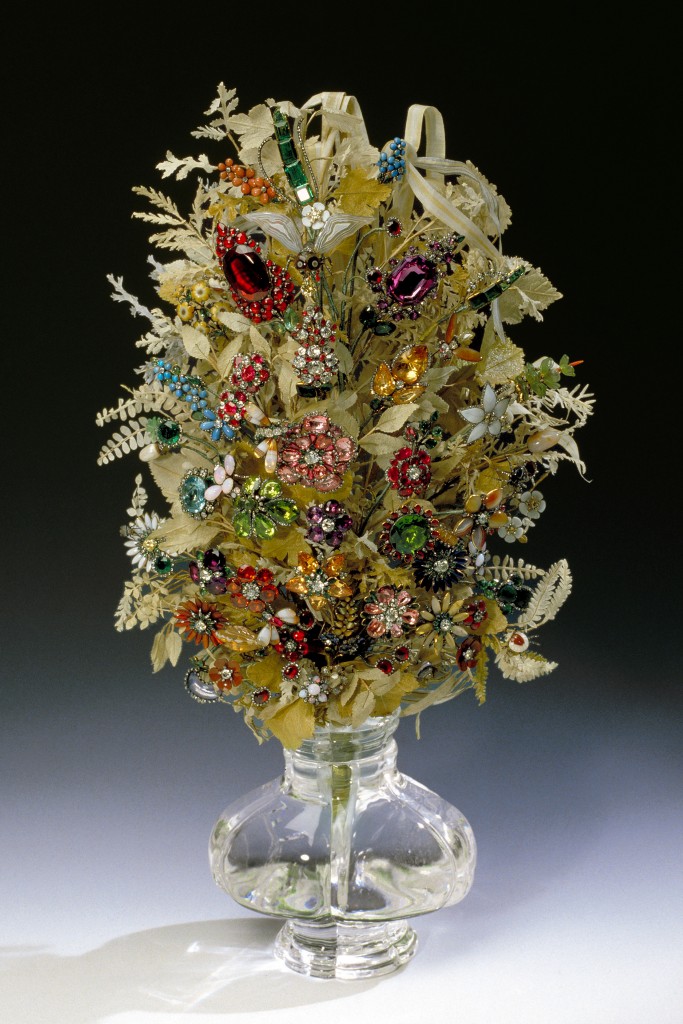
My favourite piece from Vienna’s Museum of Natural History – the fascinating bouquet of precious stones, a gift from Maria Theresa to her consort – should be viewed in this context. Francis I, Holy Roman Emperor, was noted as a great patron of the sciences who endeavoured to enlarge the court collections founded already under Ferdinand I in the sixteenth century. Despite its elaborate handicraft, the bouquet of precious stones was accordingly designed to be included in the holdings of the naturalia cabinet. Each individual flower is a jewel in itself and could be worn as a brooch or hair decoration. With this “little namesday surprise” for her spouse Maria Theresa laid the foundation stone for one of the most richly traditional and valuable collections of precious stones in Europe.
The goldsmith’s craft evident in it and the fashioning of its 2,863 gemstones suggest that it is a work dating between 1755 and 1763 of the Frankfurt School surrounding Georg Gottfried Lautensack, and subsequently of the workshop of the Viennese jeweler Johann Michael Grosser.
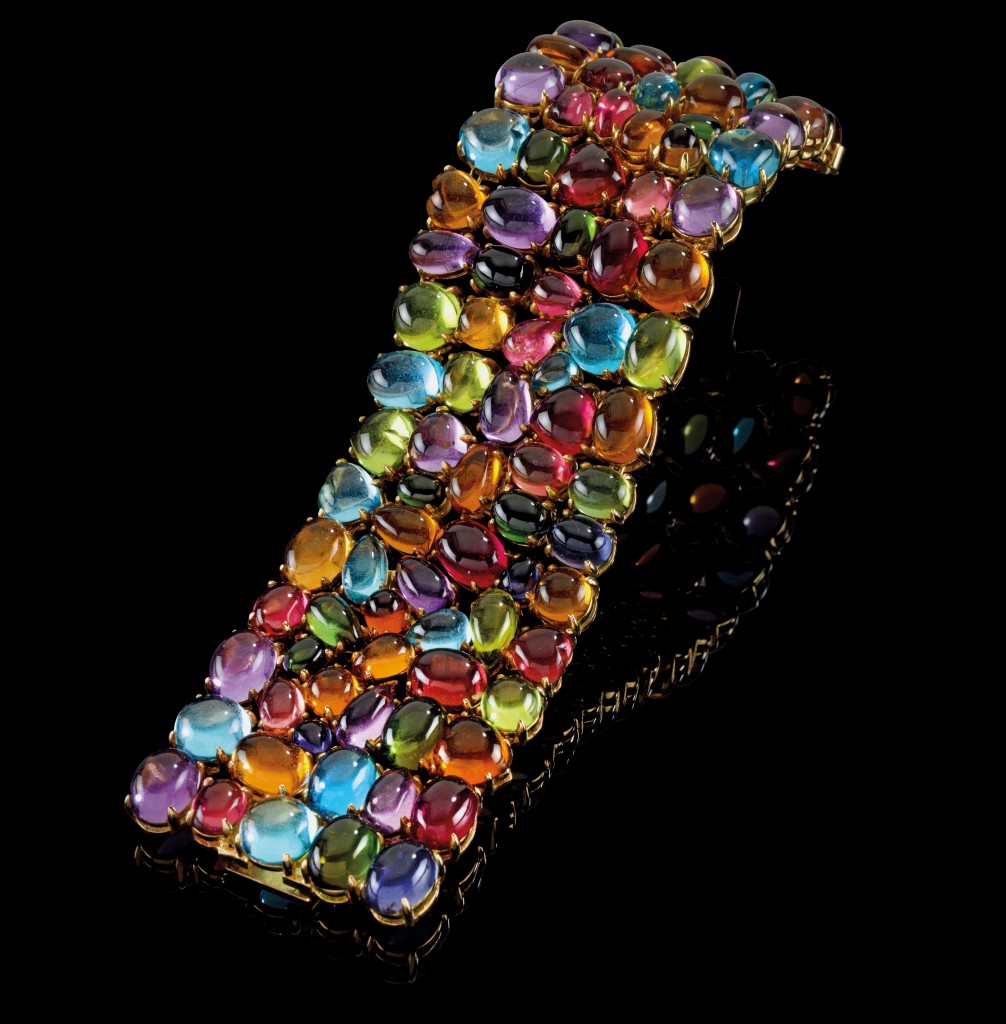
Looking at the bouquet, 47 centimetres high andaround 25 centimetres wide, its freshness and delicacy are not the only striking aspects of its workmanship. The kaleidoscopic colours and radiance of the different gems also enchant the observer: 1,119 diamonds, 400 coloured precious stones such as emeralds, sapphires and rubies, but also turquoises, topazes, spinels, amethysts, opals and various agates, lapis lazuli, corals and a pearl form a veritable torrent of flowers. They are unusual in the context of a collection of minerals in that all the processed stones are cut. Their greatly diverse types of cuts accentuate their special colour properties. Thus we find emerald and step cuts, likewise cabochon and drop cuts, and stones in briolette cut.
Reflecting the taste of the time, the stones were lovingly arranged as flowers or little insects without any claim to botanical or zoological exactness; in the figurative representations decorative and, most of all, mineralogical aspects were given much greater priority.
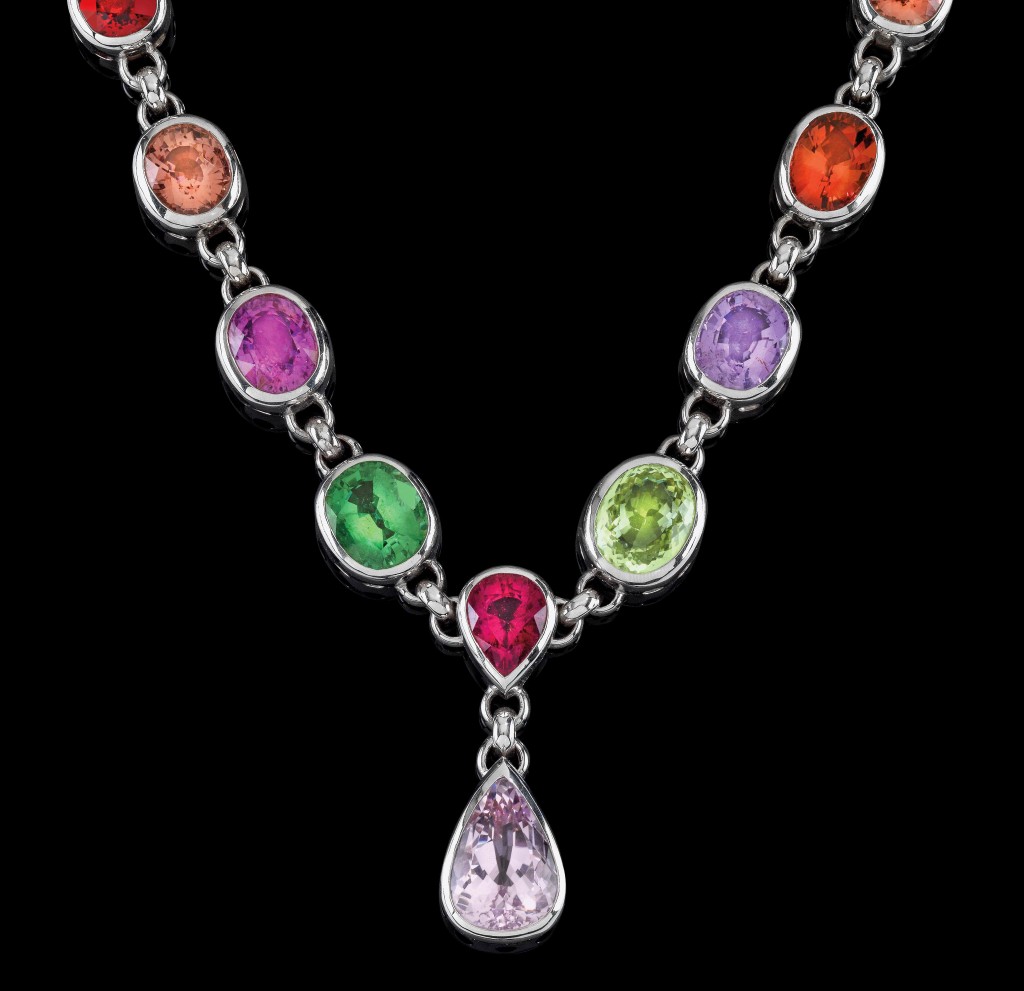
The basic mineralogical material came from the mines of Latin America – particularly Brazil – with their rich deposits of diamonds and troves of intensively coloured emeralds in Columbia.
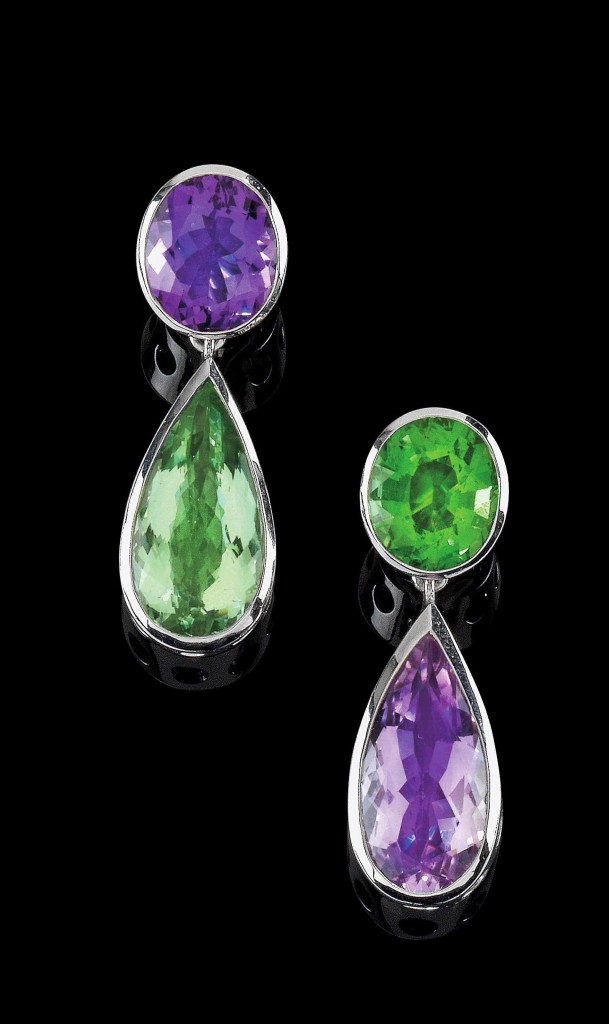
a green beryl (c. 10.50 ct), and a tourmaline (c. 7.30 ct), Estimate € 4,000 – 6,000, Jewellery auction, 26 November 2015
Because of its hardness and transparency the diamond has been valued as a special stone from time immemorial. New types of cut were developed, leading to intensified light refraction, thus accentuating the frequently metallic colouring even more distinctly. Arranged around and framing the individual petals, the diamonds are in clear contrast to the petals nestling within and accentuate the intensity of their colours.
The discovery of the American continent in the late fifteenth century also offered the opportunity of accessing new mineral and precious stone deposits. For the European royal and aristocratic houses, this meant an almost inexhaustible source of jewels and insignia of their power. Important mines in Columbia, such as those of Muzo and Chivor, supplied deep green emeralds of the finest quality, whose colouring substance is chrome. Emeralds are very vulnerable, therefore have always been fashioned in step cut, as in this bouquet.

Like the emerald, the aquamarine is also one of the precious stones assigned to the beryl group and likewise comes from mines, inter alia, in Latin America. Iron deposits in the source rocks colour the aquamarine deep blue and lend it its name-giving oceanic colour.
The red of rubies fascinated already in antiquity and was extra enhanced with drop-brilliant and faceted cuts. The intense red indeed stands out as particularly striking in the multicoloured bouquet!
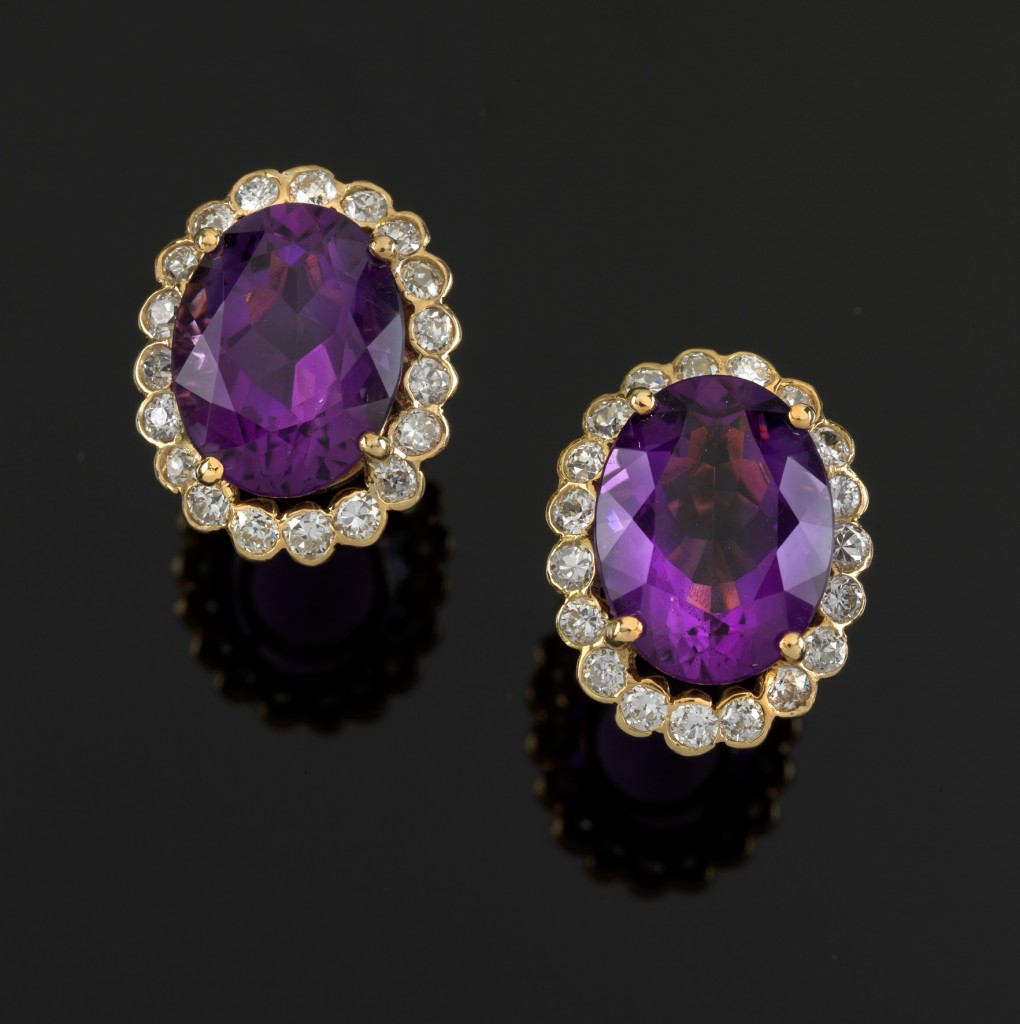
Purple hues are provided by amethysts, also stemming from Latin America. Although this stone belongs to the quartz family, large, colour-intensive stones are rare and costly. The amethyst was reputed to have healing effects as far back as antiquity and also in Buddhism.
Countless other stones including turquoises, spinels, agates, garnets, opals, but also organic substances such as corals, mollusc shells and a pearl complete this bouquet of flowers, which is unique across the world, inviting the observer to peruse in detail this gaily coloured collection of minerals fashioned into countless individual jewels.
Astrid Fialka-Herics is head of the Clocks and Jewellery Department, an expert in jewels and qualified goldsmith.
(myART MAGAZINE No. 06/2015)
Jewellery Auction
26 November 2015, 3 pm
Palais Dorotheum
For more information check the online catalogue!












